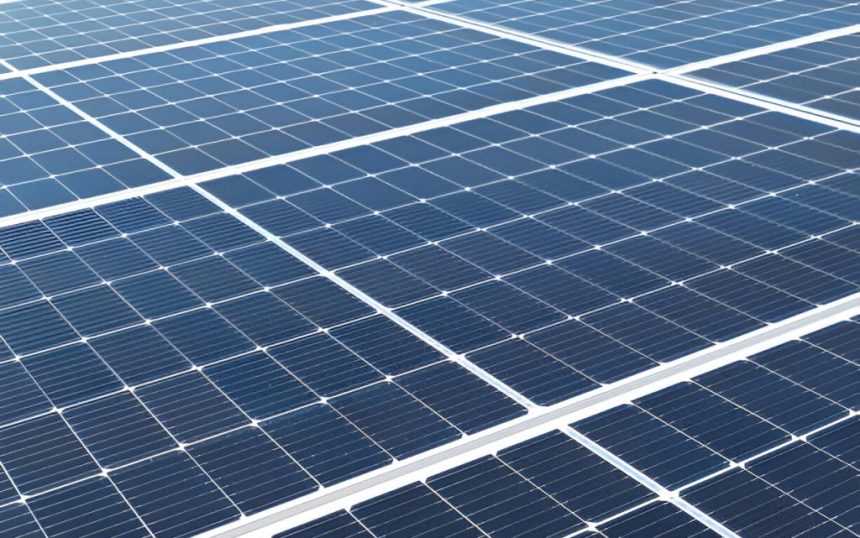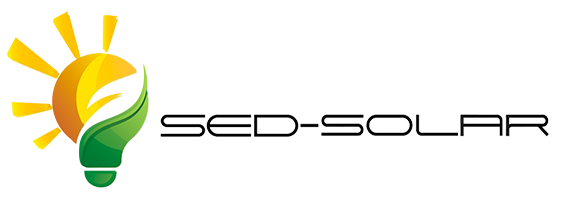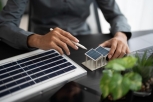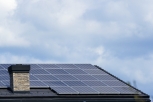
The Renting out your roof area for a Photovoltaic system is a clever way to generate passive income and support climate protection at the same time. Sounds like a win-win situation, doesn't it? In this article, you will learn everything you need to know: from the technical requirements and contract processing to calculating the lease and tax aspects.
Tip: Those who Rent out roof space should also use similar search terms such as solar roof for rent, renting out roof space for photovoltaics or rent out roof space in order to achieve better visibility in the search engines.
1 Why is it worth renting out a roof area?
- Passive incomeLeases provide you with regular income - often over a term of 10 to 20 years.
- Climate protection: With a Photovoltaic system promote the use of renewable energies and reduce CO₂ emissions.
- Increase in valueReal estate with a sustainably used roof area can increase in value.
- Minimal effortInstallation and maintenance are usually carried out by the leaseholder or a solar company.
2. requirements for successful roof rental
If you have your Rent out roof space some criteria should be fulfilled:
-
Size & stability
- At least approx. 1,000 m² are often particularly lucrative.
- A solid roof construction is necessary to safely support the weight of the solar modules.
-
Alignment & shading
- A south-facing roof surface without trees or buildings that cast shade ensures maximum solar yields.
- Check beforehand whether the roof is located in a shadow corridor (e.g. due to high-rise buildings, chimneys).
-
Roof condition
- Make sure that the roof is in good condition. Any repairs should be carried out before the system is installed.
-
Building law aspects
- Depending on the region, permits or agreements with the building authorities may be required (e.g. monument protection, development plan).
3. process: from initial contact to the lease agreement
-
Initial check & contact
- Interested parties (e.g. solar companies) inspect your roof area in advance.
- You will receive an initial assessment of the possible lease and earnings potential.
-
Profitability analysis
- Factors such as solar radiation, roof pitch and surface area are taken into account.
- The solar company creates a forecast of how much electricity can be generated.
-
Contract negotiations
- Key points such as lease price, term (often 10-20 years), installation and insurance are clarified.
- Maintenance and servicing are also important topics.
-
Conclusion of contract
- As soon as both sides have reached agreement, the lease agreement for the Roof area signed.
- All rights and obligations are clearly regulated here.
-
Installation of the photovoltaic system
- Specialist companies install the modules and connect them to the power grid.
- Quality and safety standards are essential in order to achieve stable returns in the long term.
-
Commissioning & rental income
- As soon as the system generates electricity, you will receive your agreed rent.
- This is the beginning of your passive income!
4. technical requirements: Lease roof for solar
- South orientationA south-facing roof surface benefits from maximum solar radiation.
- Tilt angleFlat roofs can be equipped with elevations, pitched roofs often have an optimum angle of 20-35°.
- Mounting systemThe fastening should not damage the roof. Flat roofs, for example, require a ballasted construction.
- Maintenance & careRegular checks help to avoid loss of performance. Contamination (leaves, dust) can impair efficiency.
5. how is the rent for roof areas calculated?
The Lease price depends on various factors that are taken into Roof rental for solar system play a role:
| Factor | Influence on the lease | Example |
|---|---|---|
| Size of the roof area | Larger areas are more lucrative | Preferred from ~1,000 m² |
| Efficiency of the system | Modern modules = higher yield | Premium modules pay off |
| Contract term | Longer term = more stable income | 10-20 years usual |
| Location / solar radiation | More hours of sunshine = higher rent | Southern Germany mostly at an advantage |
| Market situation | Influence electricity prices & subsidies | May vary depending on the region |
On average, you can expect to pay several euros per square meter for a sufficiently large area. Ultimately, however, the solar company's specific calculation is decisive.
6. tax aspects of renting out roof space
-
Income tax
- The rental income is added to your income and taxed at your personal tax rate.
- Costs (e.g. roof repairs, advice) can often be deducted as income-related expenses.
-
Value added tax
- Whether VAT is payable depends on your individual situation (e.g. small business regulation).
- A tax advisor can help you find the most favorable option.
-
Depreciation & special regulations
- In some cases, you can claim depreciation for self-operated facilities. In the case of pure leasing, however, the main tax burden is usually on the leasing income.
Important: If you have any questions, always consult a Tax consultantto optimize your personal situation.
7. practical examples & experiences
Many owners report positive experiences when they use their Renting out roof space. With a reputable provider and a clear lease agreement, stumbling blocks during installation and operation can usually be avoided. Solid project planning leads to:
- Reliable yields
- Long-term partnership with the solar company
- Low administrative costs for the owner
Conclusion: Renting out roof space - win-win for income and the environment
The Renting out your roof area for photovoltaic systems offers a wealth of advantages. You achieve passive incomemake a valuable contribution to environmental protection and enhance the value of your property. A smooth process, from initial inspection to installation, ensures safety and predictability.
With a well thought-out lease agreement and a serious Profitability analysis you are on the safe side. However, please note the tax aspectswhich affect your income, but at the same time can offer you room for maneuver. In the end, both sides benefit: You as the roof owner and the solar power user.
FAQ: Frequently asked questions about "Renting out roof space"
1. what are the advantages of renting out my roof area for photovoltaic systems?
You receive a passive income, improve your ecological footprint and increase the value of your property.
2 What requirements must my roof surface fulfill?
It should be large, stable and as shadow-free as possible. A southern orientation increases the yield and therefore also the attractiveness for solar companies.
3. how does the leasing of the roof area work?
An initial inspection by the solar company is followed by a profitability analysis and contract negotiations. The photovoltaic system is then installed and connected to the grid, after which the lease is paid.
4 How is the rent calculated?
The amount of the lease depends on the size, the efficiency of the modules, the term of the contract and the solar radiation. Larger or more efficient systems usually lead to higher rental income.
5 What tax aspects need to be considered?
You must pay tax on rental income, but can deduct income-related expenses. A tax advisor should clarify whether and in what form VAT is due.
Internal link: Learn more about solar investments
Would you like to Roof space rental also more about Solar investments experience? Visit our Solar Investment Areato get more tips on financing options and potential returns.
Contact us: Let us advise you!
Do you have any questions or would you like to Rent out roof space? The SED-Solar GmbH supports you from the initial assessment to installation and ongoing maintenance. Make a non-binding inquiry now and benefit from green electricity benefit!
(Disclaimer: This article is for information purposes only and does not replace professional tax or legal advice).






